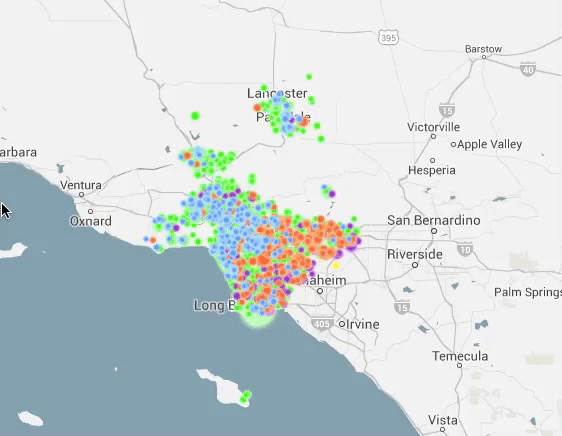The City of Santa Monica isn’t exactly Mont-Saint-Michele. But, for all intents and purposes, there’s only one way in and one way out. Though it has only 93,000 residents, tens of thousands of commuters drive into Santa Monica every day to work as disruptors in Silicon Beach, salespeople at stores, and domestic help for wealthy households. A huge share of them so do via the 10 Freeway.
Probably no one knows this better than the mayor of Santa Monica, Gleam Davis. She has to deal with the twofold specter of traffic and housing prices. It is the classic coastal California problem and it is, arguably, more acute in Santa Monica than it is anywhere else.
That’s why I was not surprised to hear Davis issue one of the most cogent descriptions of the concept of jobs-housing imbalance the other morning on a panel alongside the mayors of Beverly Hills and Culver City and the mayor pro tem of West Hollywood at the Westside Urban Forum. I was astonished and delighted to hear her and, to an extent, her counterparts enthusiastically call for more housing development as the solution.
(Disclosure: I am the board president of the Westside Urban Forum, a nonpartisan group that sponsors discussions about urban issues in Los Angeles.)
Davis described clearly how new units in Santa Monica — at a variety of price points — will enable people who commute into Santa Monica to live in Santa Monica. They can thereby abandon their drives from mid-Wilshire, downtown Los Angeles, El Monte, or points beyond, and they can forever bid farewell to the parking lot that is the 10. All at once, Santa Monica can reduce housing prices (by increasing supply) and reduce traffic (by eliminating commutes).
I say I was astonished because this kind of talk, for all its sensibility and all its obviousness to most planners, is nothing short of toxic in many circles. Santa Monica has plenty of residents who, though they consider themselves politically liberal, insist on nothing but the most conservative, restrictive policies towards growth. These residents have pared back the city’s general plan and launched ballot measures to curtail growth. Davis, to her credit, did not even try to walk a middle ground. She embraces development, and for the right reasons.
Davis’s remarks made me wonder, though, if the debate over housing is just going to keep spinning in circles, like so many wheels on the freeway. Anti-growth factions often seem immune to pro-growth arguments, and they almost always retreat to dire predictions about traffic.
These days, the challenge for planners, and elected officials, isn’t really about planning anymore. Most planners, I suspect, agree with Davis. Planners learn about the jobs-housing balance on Day One of planning school. They know what the plans should look like, and they know what patterns development should follow — at least according to our current best predictions about demographic, social, and technological trends. The challenge, then, is the one that Davis has embraced directly: that of communicating.
What’s amazing about Davis is that she had the confidence to present these ideas in public, explaining them clearly to thoughtful people in the hopes of persuading them. Elected officials do that all too seldom these days. Planners, I think, do so even less often. No matter what planning visions they hold, they have little incentive to stick their necks out.
Aside from pure obstinacy, I think stakeholders ignore the principle of jobs-housing balance because they cannot envision it. They see what happens on their block and on their commute, and they’re oblivious to the living patterns, traffic patterns, and motivations of their fellow human beings. It’s not hard to do, I suppose, when you know your neighbors largely through car windows.
The best thing I’ve seen so far is an animation by statistician Mark Evans using data from the American Community Survey. It tells you pretty much everything you need to know about where housing in the Los Angeles area should be.

The map of people who commute into Los Angeles County from surrounding counties looks like something from a medical school textbook, wherein evil bacteria are consuming one of your cells. It’s probably the brain cell that would otherwise keep you calm in traffic. Some of those invading cells — from Ventura, Riverside, San Bernardino, and Orange counties — make their way as far as the Westside, meaning they drive the entire length of Los Angeles County to get to their jobs. Meanwhile, the “cell” eats itself as people from the fringes of the county’s developed areas converge on its job centers every morning.
There’s no way you can look at a map like that and still believe that housing creates traffic. The distance it takes to get to housing is what causes traffic.
Building more housing in job-rich places would turn those invading bacteria into friendly cells. We need planners and elected officials who are willing to teach this lesson — rather than resign themselves to being lectured by people who think they live in castles.

